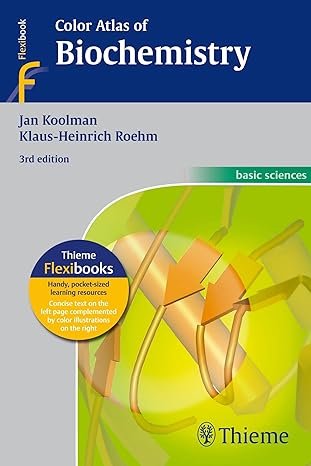Color Atlas of Biochemistry Review: A Must-Have Visual Guide
Visual, concise, comprehensive biochemistry: the perfect study and review guide.
The Color Atlas of Biochemistry, 3rd edition, is a highly-rated biochemistry textbook praised for its clear, concise writing style and exceptional color illustrations. The book uses a unique double-page spread format, combining text explanations with detailed visuals to facilitate efficient learning. Reviewers consistently highlight its usefulness as a study aid and quick reference, particularly for medical and health science students. New to this edition are expanded sections on topics like the immune system and blood clotting, along with enhanced clinical correlations. The book’s success is evident in its worldwide use and multiple translations.
Check out the Color Atlas of Biochemistry.

Color Atlas of Biochemistry Overview
The Color Atlas of Biochemistry, 3rd Edition, is a valuable and well-received resource, particularly for visual learners and those seeking a concise and effective review tool for biochemistry. Its strengths lie in its clear presentation, comprehensive coverage, and focus on visual aids. While it might not be a primary text for learning biochemistry from scratch, it is a highly effective supplementary resource for students and professionals seeking a quick and efficient review. The book is praised for its layout, integration of text and illustrations, and overall contribution to better understanding the complexities of biochemistry.
The Color Atlas of Biochemistry, 3rd Edition, is presented as a visually driven, concise, and compelling study aid for biochemistry, primarily targeted at medical and health science students. It aims to provide a comprehensive overview of human biochemistry using a unique “Flexibook” format. The book emphasizes clarity and efficiency for quick review and targeted learning.
Color Atlas of Biochemistry Key Features and Strengths
- Visual Learning Focus: The central strength is its reliance on color illustrations and diagrams. The book uses a double-page spread format with text on one side and corresponding graphics on the other. This visual approach is designed to make complex concepts more understandable and memorable.
- As stated in customer reviews:
- “The diagrams and pictures are very elucidative.” – Jose Luis Capelo Martínez
- “Having text to one side and images on the other helps reinforce and connect the concepts.” – Matthew P Foley
- “…a picture is worth thousands of words, especially in science.” – Dr. Michael J. Storek
- Concise and Efficient: The book is designed to be a quick and efficient resource. The format is “bite-sized learning capsules,” allowing users to target specific information for classroom and exam success. Customer reviews emphasize this, such as:
- “Concise and integrated…” – Matthew P Foley
- “…simple, concise…” – Mohsan Khan
- “This is the perfect book for students on the go, or physicians needing a brief refresher.” – Doody Enterprises, Inc.
- Comprehensive Coverage: Despite being concise, the atlas covers various biochemistry topics. The 3rd edition has expanded coverage in areas such as the immune and digestive systems, motor proteins, transport processes, blood clotting, fatty tissue biochemistry, metabolic integration, neurotransmitters, and signal transduction. Reviewers note this depth:
- “Covers a large number of topics…” – Chris Higgs
- “…covers such a wide array of biochemistry-related topics.” – Doody Enterprises, Inc.
- Color-Coding and 3D Graphics: The book utilizes color-coded symbols for atoms, molecules, and processes to aid comprehension. Computer-generated 3D representations of molecules are also employed to make complex topics more tangible.
- Clinical Relevance: The 3rd edition increases its focus on patho-biochemical aspects and clinical correlations, making it more relevant for exam preparation in clinical sciences.
- International Acclaim: Students have used The book worldwide since its initial publication and translated into fifteen languages, suggesting its international recognition.
Color Atlas of Biochemistry Target Audience
The book is primarily intended for:
- Medical students
- Health science students
- Undergraduate students in biological sciences
- Physicians needing a quick refresher on biochemistry
Color Atlas of Biochemistry Positive Feedback Highlights
- Clarity and Readability: Customers frequently praise the book for its clear, concise writing style and the elucidating diagrams.
- Effective Study Aid: Many users found it invaluable for exam preparation and understanding complex topics.
- Value for Money: Some reviewers compare it favorably to more expensive and verbose textbooks, noting its affordability and efficiency.
- Superior to other textbooks: Many reviewers note its usefulness compared to traditional, more expensive books.
- Good supplemental resource: While not intended to be the sole learning resource, many found it is an excellent companion to more comprehensive texts.
Color Atlas of Biochemistry Potential Limitations & Negative Feedback
- Not a Primary Source: Some users correctly point out that it’s not meant to be a primary learning resource for biochemistry, but rather a supplement for reinforcing and reviewing previously learned material, as said by user radio100:
- “…don’t expect to learn biochemistry with this book, but you will expand and renew what you learned…”
- Skin Color Issue: One reviewer expressed frustration about the absence of information on the biochemistry of human skin color, indicating a possible gap in coverage.
- Kindle Version Issues: One reviewer noted serious problems with the Kindle version of the book.
Color Atlas of Biochemistry Frequently Asked Questions (FAQs)
What is the Color Atlas of Biochemistry, and what makes it unique?
The “Color Atlas of Biochemistry” is a comprehensive study aid that presents the full spectrum of human biochemistry using a visually-driven approach. Its unique “Flexibook” format pairs concise explanatory text on the left-hand page with detailed full-color graphics on the right. This combination aims to make complex biochemical concepts more accessible and easier to understand and retain. The use of color-coded symbols and 3D computer graphics also enhances comprehension.
Who is the intended audience for this book?
This book is designed for many users, primarily medical and health science students. However, it also serves as an excellent reference and refresher for physicians and other professionals in the field who need a concise yet comprehensive review of biochemistry. The “on-the-go” format appeals to anyone needing quick access to information.
What kind of content does the book cover?
The “Color Atlas of Biochemistry” covers various biochemistry-related topics, including core concepts and recent advances. The third edition includes explicitly an increased focus on path-biochemical aspects, clinical correlations, the immune and digestive systems, motor proteins, transport processes, blood clotting and fibrinolysis, the biochemistry of fatty tissue, metabolic integration, neurotransmitters, and their receptors, and signal transduction. It aims to cover most of the key topics in human biochemistry.
How does the book use visuals to aid learning?
The book employs a range of visual aids to enhance understanding. This includes detailed full-color illustrations, color-coded symbols for atoms, biomolecules, processes, and simulated 3D representations of essential molecules. These visuals complement the text, making complex topics more tangible and reinforcing learning through the visual medium. The combination of text and visuals on facing pages also aids in concept reinforcement and memory.
How does this book compare to traditional biochemistry textbooks?
Many users have found that the “Color Atlas of Biochemistry” offers a more efficient and engaging approach to learning compared to traditional, often dense, and expensive textbooks. It is known for its concise writing, efficient organization, and focus on visual aids, which makes it a more accessible study aid and, importantly, is often more affordable than many typical textbooks. Some users suggest it’s an ideal companion text to complement a core textbook, providing a more digestible overview of the same material.
Has the book been reviewed well by users?
The “Color Atlas of Biochemistry” has received overwhelmingly positive reviews from users, with many describing it as “amazing,” “excellent,” and a “must-have.” Users praise its clear, concise presentation, elucidating diagrams and pictures, and how the text and images work together to reinforce concepts. They find it a valuable and practical reference, study aid, and companion to more complex textbooks. The book’s ability to offer a concise yet comprehensive overview of complex material has also been highlighted.
What are some of the notable features of the third edition?
The third edition has expanded its content, specifically increasing the focus on patho-biochemical aspects and clinical correlations. This edition includes new sections on the immune and digestive systems, motor proteins, transport processes, blood clotting and fibrinolysis, biochemistry of fatty tissue, metabolic integration, neurotransmitters and their receptors, and signal transduction. It also extensively employs color-coded symbols and 3D computer graphics for better comprehension.
Does this book aim to replace a primary biochemistry textbook?
While some users recommend it as an efficient and concise alternative to traditional textbooks for reference and review, most do not suggest that it is intended to replace a comprehensive primary textbook entirely. Instead, it is best used as a supplementary resource that helps to solidify knowledge and concepts gained from the primary text, and it is also seen as a helpful way to review biochemistry topics when a user needs a quick and straightforward reference.





